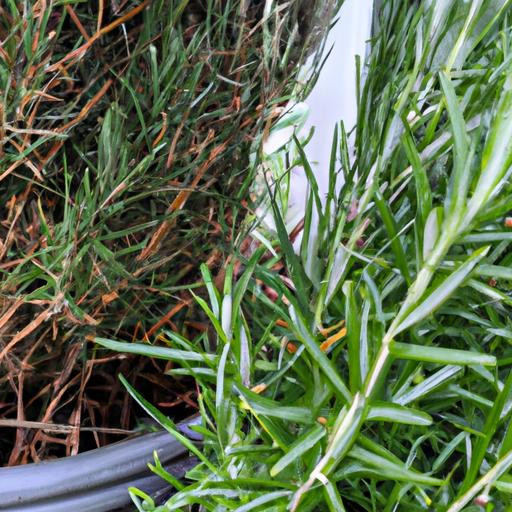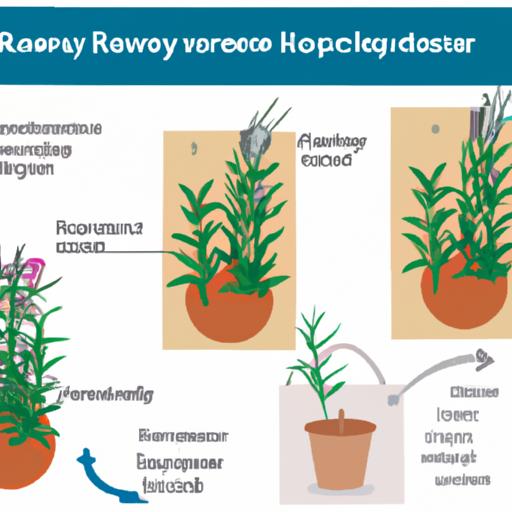Discover why your rosemary plants are drooping and learn how to address the issue effectively. Get expert tips from Rowe Organic for a thriving herb garden.
Welcome to Rowe Organic, your green sanctuary for expert tips and inspiration in organic gardening. In this article, we will explore the common issue of rosemary drooping and shed light on the reasons behind it. Understanding why your rosemary plants are drooping is essential for maintaining their health and ensuring a thriving herb garden.
The Disheartening Droop
Rosemary, with its aromatic leaves and versatile culinary uses, is a beloved herb for many gardeners. However, it can be disheartening to see your rosemary plants drooping and not thriving as expected. To address this issue effectively, it is crucial to identify the underlying causes and take appropriate action.
Understanding Rosemary Drooping
Before we delve into the factors that contribute to rosemary drooping, let’s take a moment to understand what this phenomenon entails. Drooping in rosemary plants refers to the wilting or bending of the stems and leaves, giving the plant a limp appearance. It is a clear indication that something is amiss and requires your attention.
Factors Affecting Rosemary Drooping
Watering Issues
One of the primary culprits behind rosemary drooping is improper watering. Rosemary prefers well-drained soil and is susceptible to root rot and other issues if overwatered. On the other hand, inadequate watering can lead to dehydration, causing the plant to droop. Finding the right balance is crucial.
To ensure optimal watering, stick your finger about an inch into the soil. If it feels dry, it’s time to water the plant. Additionally, consider using a well-draining soil mix and a pot with drainage holes to prevent waterlogging.
Soil Conditions
The health of your rosemary plants heavily depends on the soil they are planted in. Rosemary thrives in slightly acidic to neutral soil with good drainage. Poor soil conditions can hinder nutrient absorption and lead to drooping.
If you observe drooping and suspect soil-related issues, consider conducting a soil test. This will help determine if the pH levels, nutrient content, or soil structure need adjustment. Incorporating organic matter, such as compost, can improve soil health and promote healthy growth.
Sunlight and Temperature
Rosemary is a sun-loving herb that thrives in bright, direct sunlight. Inadequate exposure to sunlight can weaken the plant, leading to drooping. Insufficient light can also make rosemary more susceptible to pests and diseases.
Ensure that your rosemary plants receive at least six hours of direct sunlight daily. If you’re growing rosemary indoors, place it near a south-facing window or use grow lights to provide sufficient light.
Extreme temperatures can also impact rosemary’s health. Frost and freezing temperatures can cause wilting and damage the plant. If you live in a region with harsh winters, consider protecting your rosemary plants or bringing them indoors during the colder months.
Pests and Diseases
Pests and diseases can wreak havoc on your rosemary plants, causing them to droop and deteriorate. Common culprits include spider mites, aphids, powdery mildew, and root rot.
Regularly inspect your rosemary plants for any signs of infestation or disease. If detected early, you can take appropriate measures to prevent further damage. Consider using organic pest control methods or seeking advice from a gardening expert to address these issues effectively.
Frequently Asked Questions (FAQs)
Q: How often should I water rosemary plants?
A: Rosemary plants should be watered when the top inch of soil feels dry. Avoid overwatering, as this can lead to root rot. It’s better to underwater than to overwater rosemary.
Q: What type of soil is best for rosemary?
A: Rosemary thrives in well-draining soil with a slightly acidic to neutral pH. A mix of sandy soil and organic matter, such as compost, provides ideal conditions for healthy rosemary growth.
Q: Can overwatering cause rosemary drooping?
A: Yes, overwatering is one of the common causes of rosemary drooping. It leads to root rot and deprives the plant of necessary oxygen, causing it to wilt and droop.
Q: How can I protect my rosemary from pests and diseases?
A: Regularly inspect your rosemary plants for signs of pests or diseases. Use organic pest control methods such as neem oil or insecticidal soaps. Properly maintaining the plant’s health through appropriate watering, sunlight exposure, and soil conditions can also help prevent pest and disease infestations.
Conclusion
In conclusion, understanding why your rosemary plants are drooping is crucial for maintaining a healthy herb garden. By addressing the underlying causes, such as watering issues, soil conditions, sunlight and temperature, and pests and diseases, you can help your rosemary thrive and prevent drooping.
Remember, at Rowe Organic, we strive to provide you with expert guidance for your organic gardening journey. Cultivate, nurture, and grow naturally with our tips and inspiration.


